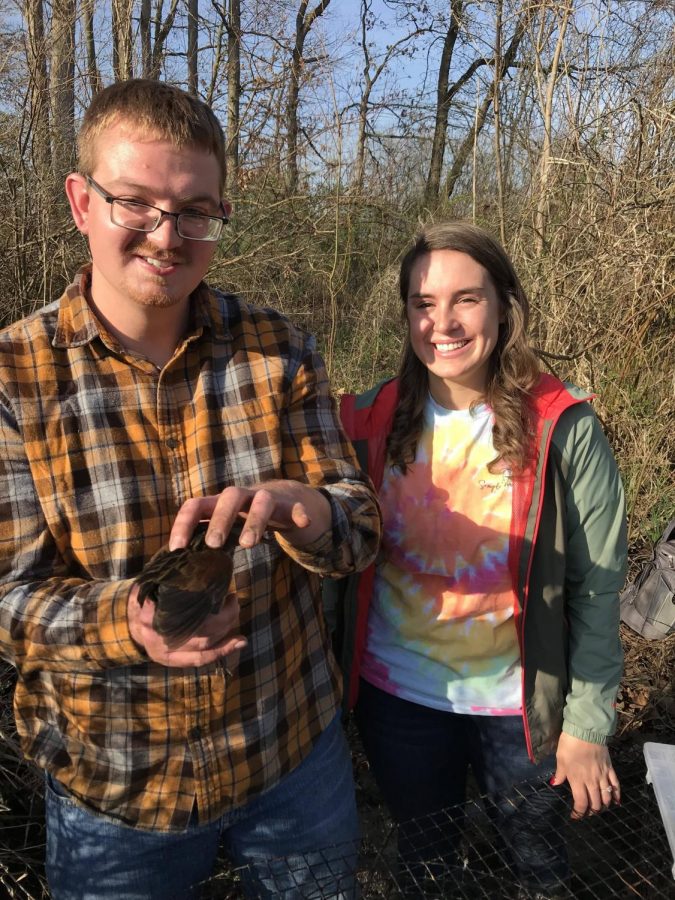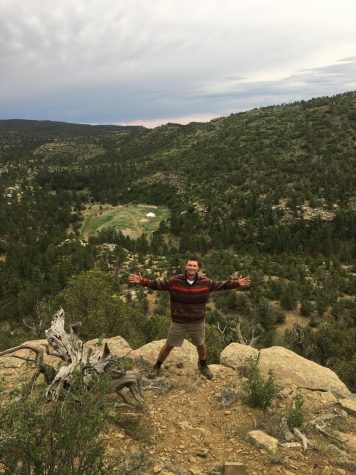AU preserves continue to be resource for students
AU students work with Rail birds at the Black Fork Wetlands as apart of classes that enhance their learning experience. Professor Merrill Tawse has researched these rail birds for a few years, which are on the watch list for endangered species.
November 8, 2019
In most majors and departments at Ashland University, there are opportunities outside of the classroom for students to become involved in future occupations.
In the biology and toxicology department, this opportunity comes through the use of local wetlands and preserves that give students hands on experiences to apply the skills and terms they have used in class.
“We are trying to get our students knowledgeable about techniques and field work, or lab work, and we want to help them build their resume,” Merrill Tawse, professional instructor of biology said. “And I think even more importantly we want to help them find out what they like, what they have a passion about and then also what they don’t like.”
These preserves managed by AU include the Black Fork Wetlands (diverse wetlands and upland habitats), Canfield (stream), Dayspring (stream and forested stream), Rupp Stahley (restored prairie) and Stoffer (old field and mature forest).
The Black Fork Wetlands is the only openly public preserve — and is by far the largest — just six miles south of campus on U.S. 42 provides the largest opportunity for learning because of its diversity of habitats and wildlife.
“We have sites that we can get out there and the students can be exposed to some of the different bio communities we have in our area,” Tawse said.
For each biology class that Tawse and Dr. Patricia Saunders, associate professor of biology, teach, they typically take their students out for a few field trips throughout each semester.
Students are able to take the skills they have learned in the lab or the terms they have learned in the classroom and put them to use and have kind of an “AHA or WOW” moment as Tawse would describe it.
“The wetlands and preserves enhance my understanding of these broad topics by allowing me to apply them to the field,” junior biology major Lexi Butterbaugh said. “I feel that field trips to the wetlands and preserves better prepare myself and colleagues for future jobs.”
In addition, AU students have also been given the opportunity to work with professors in their research endeavors on these wetlands. For Tawse specifically, he has studied Virginia and Sora Rail birds, which are on the watch list of endangered species, but are not endangered yet.
“Students have been working back in there for the last several years trying to find out what parts of these wetlands they’re using, how they interact, do they move between the wetlands?” Tawse said.
Tawse said that these rails do a lot of probing in muck for food and while they do this, they also ingest lead shot from shotguns during waterfowl hunting.
This past year, he expanded his work with rails by taking feather samples from the Black Fork Wetlands where waterfowl hunting is minimal and from Sandusky Bay, where waterfowl hunting has been common for over a century.
After running the feathers through an atomic absorption simulator, he was able to prove his hypothesis correct that the rails do ingest the lead from shotguns, and it is extremely higher in waterfowl hunting areas such as Sandusky Bay.
With Black Fork Wetlands providing many diverse habitats for humans to study and preserve, it also provides habitats suitable for roughly 200 species of birds, eagles nests, beavers, otters, trumpeter swans and sandhill cranes.
While the biology department enjoys using the wetlands, Saunders wants to make it widely known that they can be used by a broader range of departments and people around campus.
“I try to promote them with my colleagues,” Saunders said. “I could see art classes going out to some of our sites or writing classes. I could only imagine what kind of creative thinking would go on if they were wandering around in the prairie in early September.”
No matter how many times these professors use the wetlands in class demonstrations and explorations, it is no doubt that they are beneficial to the growth of the students.
“Classes will bond going into the field together which makes for a better classroom experience,” Saunders said. “I think they really enhance our teaching of science in many ways.”



